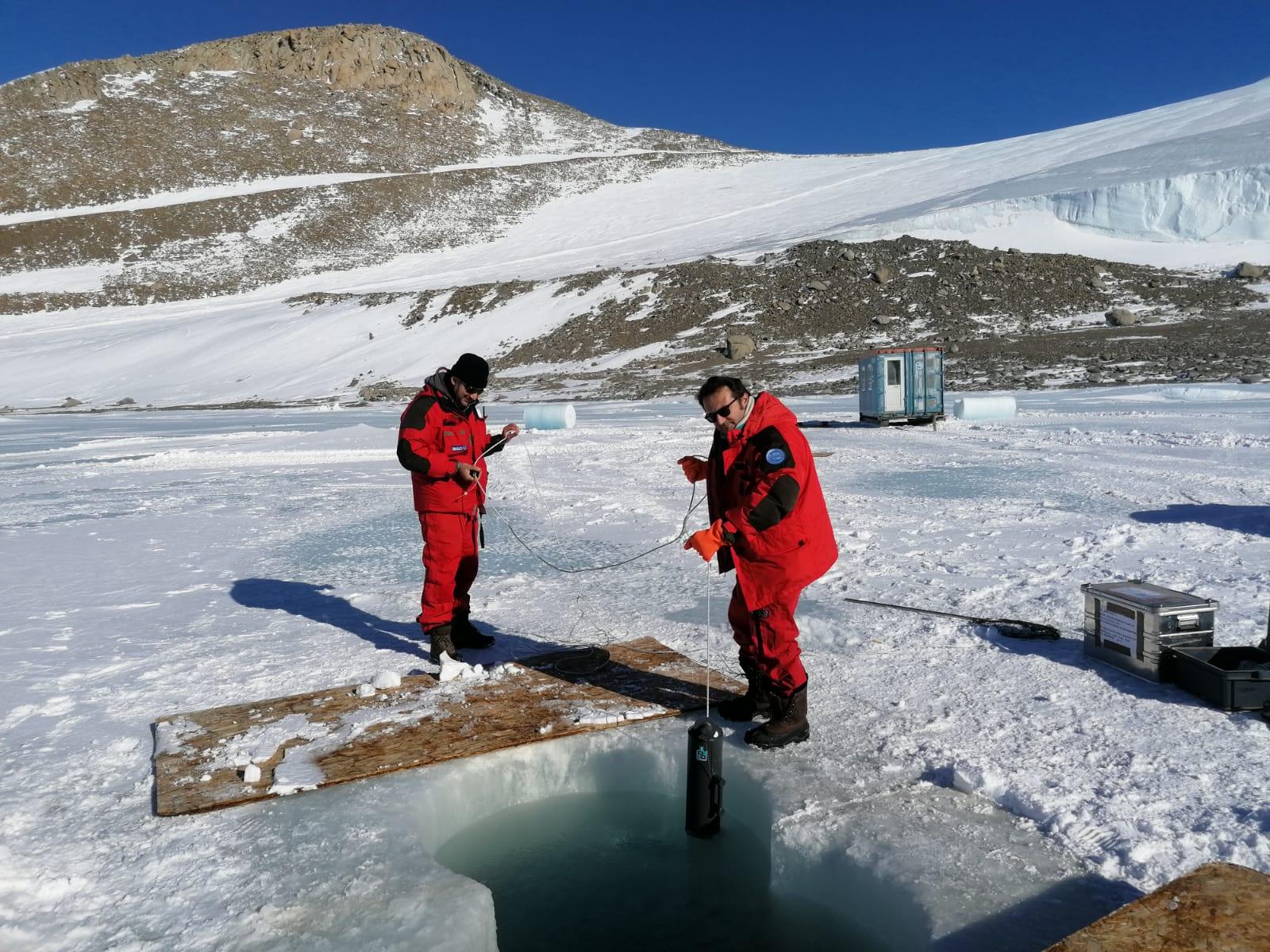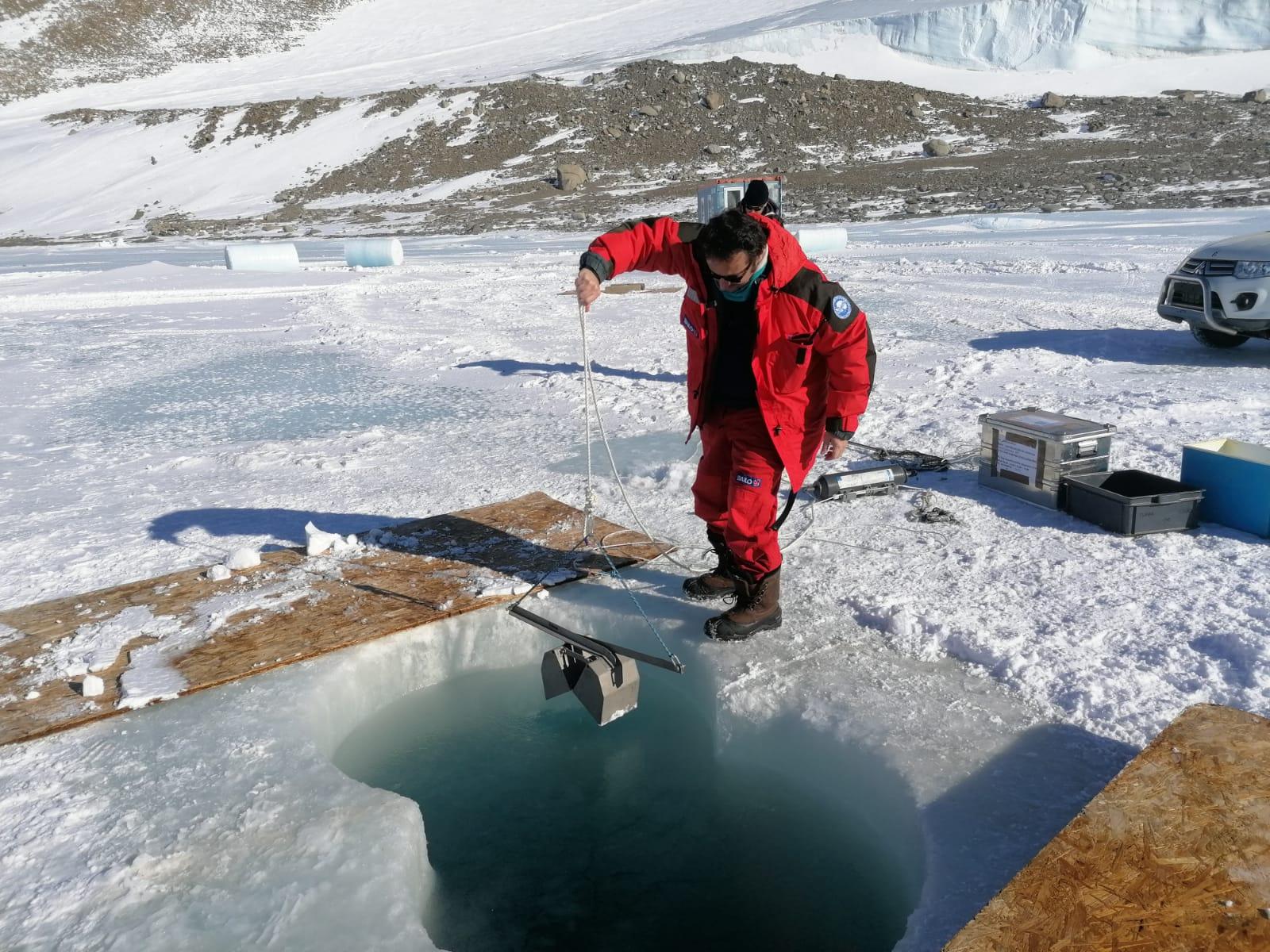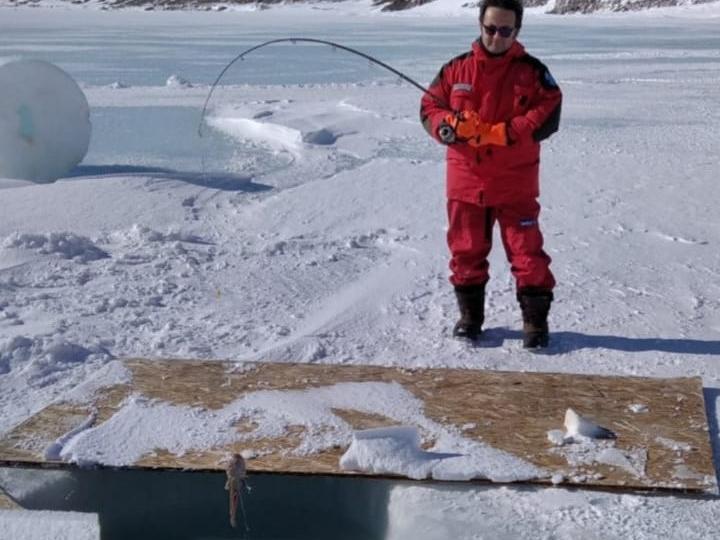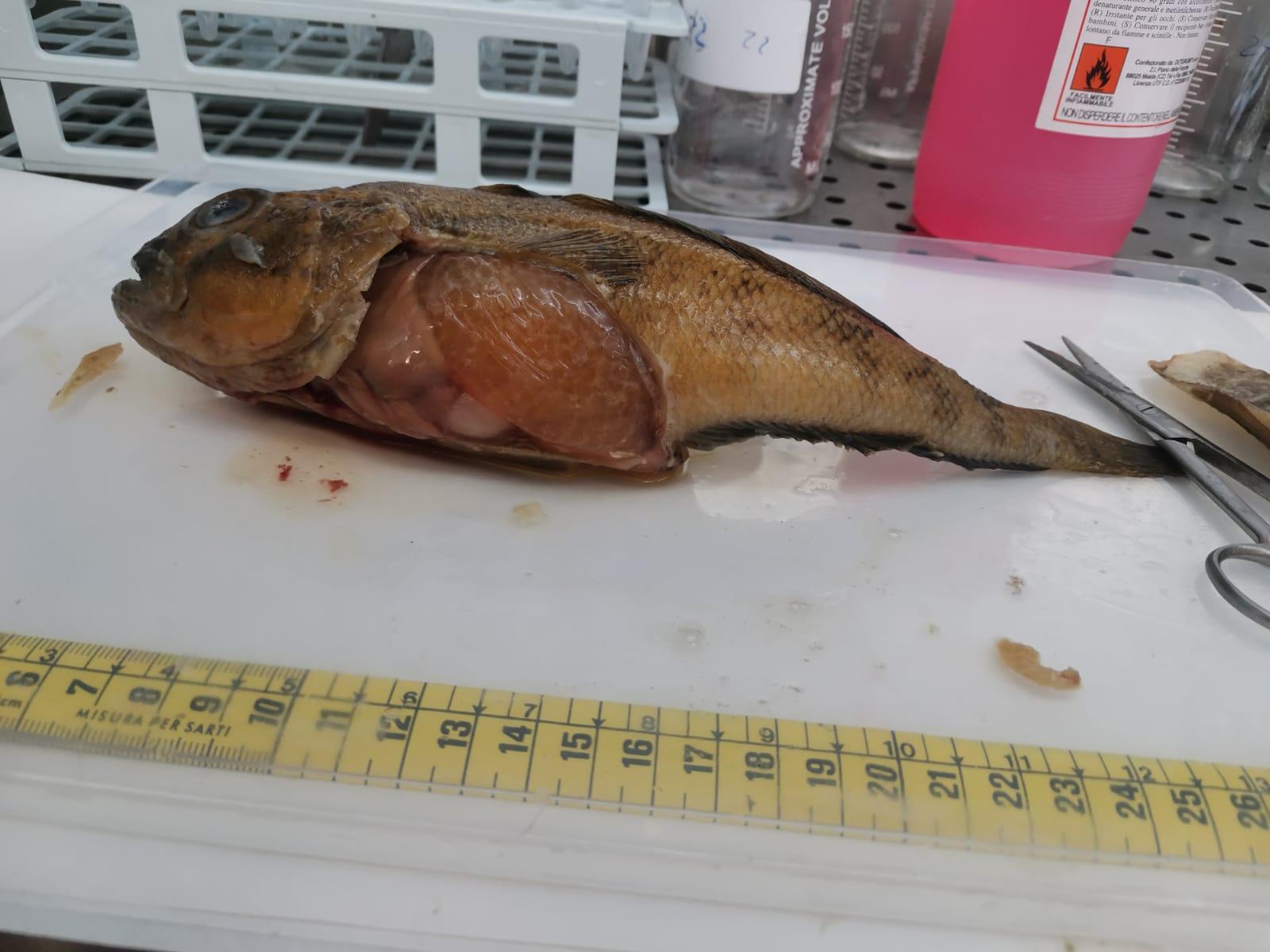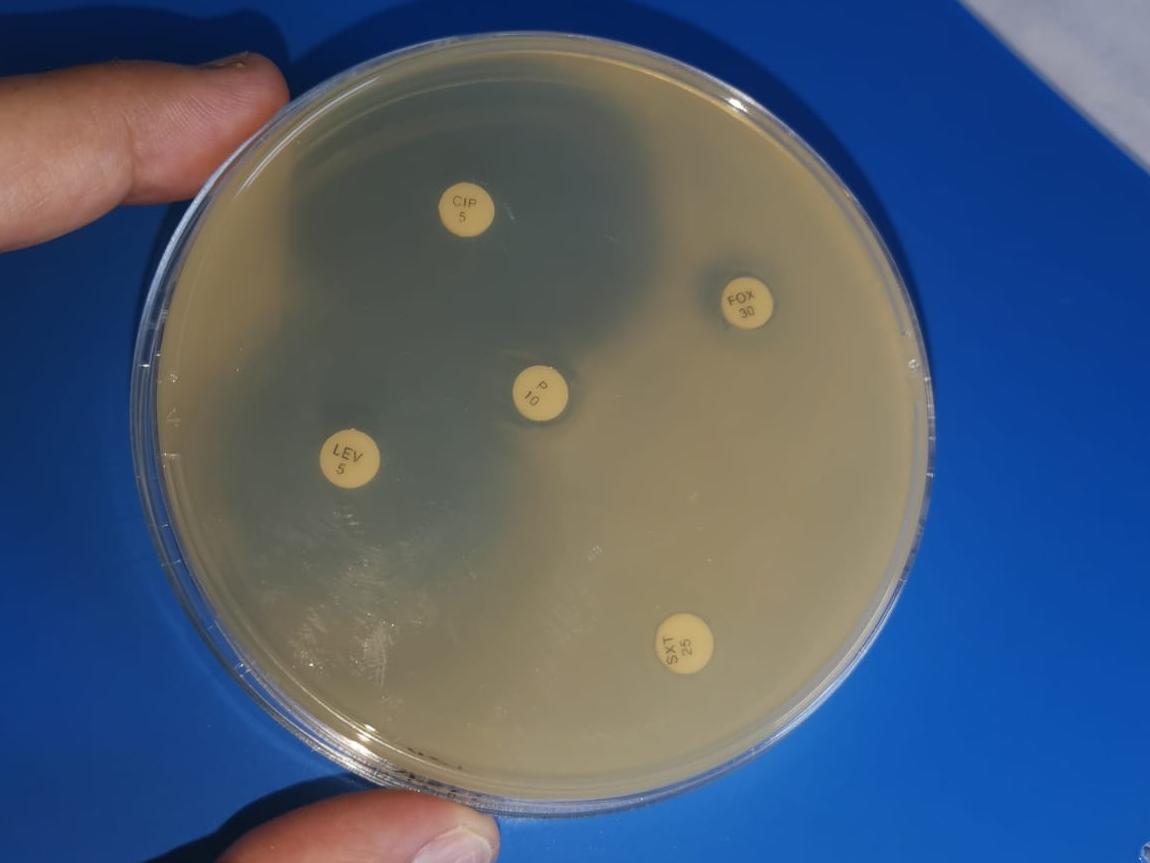- Acronym
- SBAM
- Code
- PNRA18_00041 - B2
- Anno
- 2020
- Research area
- Life science
- Specific research topic
- marine biology, microbial ecology, ecotoxicology
- Region of interest
- Antartide, Terra Nova Bay, Mare di Ross, Road Bay, Tethys bay
- PI
- Monique Mancuso
- PI establishment
- IRBIM CNR Messina
- Institutional website
- http://www.irbim.cnr.it
- Other institutions and subjects involved
- University of Siena,Dept. of Physical, Earth and Environmental Sciences Sect.
- Consistency of the research team
- UO Messina: 3 female researchers, 1 technician, 1 researcher, 3 associates ( 1 full professor, 2 RTD researchers) UO Siena: 1 professor, 1 researcher, 2 technicians
- Project status
- In progress
- Main stations used
- MZS
- The project
The Antarctic environment is considered a "virgin" environment, but although its protection is regulated by the Antarctic Treaty, recent studies have reported the presence of anthropogenic pollutants. At present, the consequences are unknown, so investigations are underway to understand how the system may be threatened and what the possible scenarios are. Particularly in polar marine waters, the presence of various pollutants such as microplastics, POPs, hydrocarbons, heavy metals etc. has been observed, posing a global threat to ecosystems and human health. Among the contaminations in the sea, antibiotic contamination is becoming of increasing concern; in fact, it has been shown how antibiotic-resistant strains in marine waters can transfer antibiotic resistance genes to the Antarctic bacterial community. The objectives of the SBAM project are: 1) study the presence of antibiotic-resistant and metal-resistant and/or tolerant bacteria in water, marine sediments and in specimens of Trematomus bernacchii, a native carnivorous species; 2) study the gut microbiome; 3) search for microplastics ingested by fish, in sediments and feces of cocos and penguins; 4) search for antibiotics attached to microplastics ingested by fish; 5) search for heavy metals in sediments and target organs (gonads, liver, kidney, muscle etc. ) of fish.
Partial results
At present, about 500 bacterial strains have been isolated at the UO of Messina, we have tested over 200 strains for resistance towards 28 different antibiotics, most of the strains have multiple resistances to antibiotics. The next step will be to test antibiotic-resistant strains toward 8 heavy metals (chromium, mercury, cobalt, nickel, cadmium, zinc, lead and copper). At the same time all Trematomus bernacchii specimens (85 samples) were processed for isolation of microplastics, out of the first 48 samples analyzed 54% tested positive for microplastics, subsequent analysis will identify the polymeric nature, station A at the moment seems to be the most impacted.
The Siena UO is analyzing sediment samples for heavy metals, from partial results Station A has higher levels of Lead and Copper (Pb and Cu), while Cadmium (Cd) was higher in samples from Station B.
- Images
-
- Motivation, importance of research
The study of the spread of emerging pollutants is of fundamental importance in order to understand how these pollutants spread through the Antarctic environment, how they enter the food chain, and how native microbial communities respond to their spread. The increasing presence of pollutants, such as microplastics, even in the pristine Antarctic environment presents new risks to the entire ecosystem. Microplastics themselves are a source of stress for many organisms throughout the trophic chain. They are easily ingested by filter-feeding organisms or preyed upon as they are exchanged as zooplankton. In addition to causing various problems such as suffocation or intestinal blockages by the organisms that ingested them, they can adsorb many pollutants in water such as: heavy metals, antibiotics, etc., which can bioaccumulate and reach the top of the food chain. The SBAM project aims to study the diffusion of these pollutants in different compartments of the Antarctic ecosystem, samples of water, sediment and target organs of "Trematomus bernacchii," a fish, carnivorous species widely distributed in this ecosystem, will be taken and analyzed. Samples were taken in two different areas, a site near the discharges from base station A (Road Bay), where presumably more anthropogenic impact could be recorded, and a site further away from base station B (Thetys Bay) and therefore to be considered as a pristine environment. In addition, seal and penguin droppings samples of various species were collected from different sampling sites located at different distances from the base in order to see how these pollutants also accumulate at higher trophic levels. Analyses will be performed on the various matrices sampled and in addition these samples will be used for the isolation and study of bacterial strains possibly resistant or sensitive to antibiotics and heavy metals.
- Objectives of the proposal
The first objective of the SBAM project is to take water, sediment and fish samples at sites A and B. These samples will be processed for direct study of the fraction of microplastics present there, and to investigate the presence of antibiotics and heavy metals. Subsequently, isolation and characterization studies of bacterial strains will be done from these matrices in search of strains possibly sensitive or resistant to heavy metals and antibiotics. Sediment samples will also be stored for future molecular biology analyses. Finally, other samples of seal and penguin droppings will be taken for the study of the spread of microplastics to higher levels of the trophic chain.
- Activities carried out and results achieved
Activities carried out in the field
Five sampling of fish, water and sediment were conducted at Site A in Road Bay (Nov. 3, Nov. 13, Nov. 23, Dec. 3 and Dec. 13-16) and Site B in Tethys Bay (Nov. 1, Nov. 11, Nov. 21, Dec. 1, Dec. 10) . Ten specimens of "Trematomus bernacchii" were taken for each sampling (except for the December 13-16 sampling at Site A where only three specimens were caught), using fishing rod and artificial bait. Once caught, three specimens were transported to the base to carry out cultivation and bacterial isolation while the other 7 stored immediately at -20°C; all samples were marked with date, site and specimen number. Water sampling: were taken via Niskin at three different depths: surface, 10 m and at the bottom (15 m). Sediment sampling was done by Van Veen Bucket. For each sampling, a measurement of the main chemical and physical parameters was performed by multi-parameter probe (Ph, temperature, oxygen and salinity). Additional samples of seal and penguin droppings, taken at other sites, were collected and stored at -20°C until further analysis in Italy, thanks to collaboration with other projects and colleagues that included this type of sampling.
- Products
We currently have published work in collaboration with the Genoa BCAA on the presence of microfibers in 24-year-old samples of Trematomus bernacchii.
Bottari T., Conti Nibali V., Branca C., Grotti M., Savoca S., Romeo T., Spano N., Azzaro M., Greco S., D’Angelo G., Mancuso M. (2022) Anthropogenic microparticles in the emerald rockcod Trematomus bernacchii (Nototheniidae) from the Antarctic Scientific Reports 12:17214
